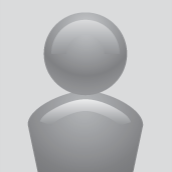My Videos
A Quick Overview of how Sheet Metal Punching Works
Sheet metal punching is one the most effective techniques by which you can create various custom shapes out of sheets of metal with different thicknesses.
The issue is: how does sheet metal punching work? Let's look at the procedure.
Sheet metal punching process
Sheet metal punching equipment make use of metal punches as well as dies. Die are located placed on the opposite side of the sheet material. While the punches travel through sheet metal, the dies perform opposite. Die dies are used to support the metal and ensure that the metal does not break, further, they aid in the making of precise holes. This method permits punch and die manufacturers to form sheet metal parts that are of any form and style, depending on the needs. Once you aim to learn additional information about die tooling, you've to browse around
website.
To create holes and indents within metal, Modern sheet metal punching techniques are performed making use of state-of-the-art tools.
But the principles remain the same, for example:
The sheet metal that is being punched is sandwiched between the metal punches and dies. The punch is moved downward into the die. This process causes the sheet metal that is beneath the die to be cut from the material surrounding it. The metal that is sheared can be collected in a container and then reused or used. The punch and die makers keep repeating these steps until they reach the desired shape.
One particular process that is commonly used to produce specific shapes for holes is known as "nibbling." When using this procedure, an extended series of very small holes are made one at a. The holes can be created with customized designs to meet the needs of specific users.
Are different shapes and holes compatible different metal dies and punches?
This isn't the case. You can make use of existing dies to create the desired shape if you don't want to purchase an individual tool or die. If making specific forms becomes more difficult then you may want to purchase a specific mold.
Are all metals able to be punched?
Almost all metals can now be punched with the help of advances in sheet metal punching technologies and know-how. This versatility allows the use of sheet metal punching across a vast range of industries such as aerospace, automotive, industrial engineering, manufacturing, electronics textiles, and various other industries.
Aspects that impact the quality of punches?
A few key factors determine the quality of each punch. These include the size and shape of the die and punch along with the force used and the state of the die and punch. It is preferential to punch the hole in a circular shape with a diameter less than the thickness of metal. For strong metal alloys however, the hole's size is not important.
To ensure the best performance from your punches or matrices during punch die set punching tool, it's a good idea that you follow these rules. For example, for round holes, the minimum diameter should be at least equal to the thickness of the sheet. For the holes with a shaped design, the shortest length of the hole should be at least greater than the thickness of the sheet.
How long can you utilize your metal punches as well as dies?
As a rule of thumb the sheet metal punching tools come with a middle tool life of between 400,000 and 600,000 strokes. But, there is several very beneficial suggestions that aid manufacturers of punch and dies to ensure that their tooling has a longer life. For instance, you can remove dirt using compressed air or clean rags and then you can be diligent in lubrication and cleaning. Examine the cutting edges of dies and metal punches regularly and if required sharpen them. Furthermore, in the process of sheet metal punching, it is vital to make sure that the punching process is carried out on the appropriate materials and to use the right energy power.
Do you think it is possible to punch sheet of metal?
There's an alternative method for shaping sheet metal that is often performed with the same machine, which is known as sheet metal stamping. The process of punching sheet metal aims to punch holes through sheet metal and stamping attempts to shape the metal in order into specific shapes. Laser doesn't use any physical force and is not able to shape metal in the same reliable method as a CNC punch or press.


